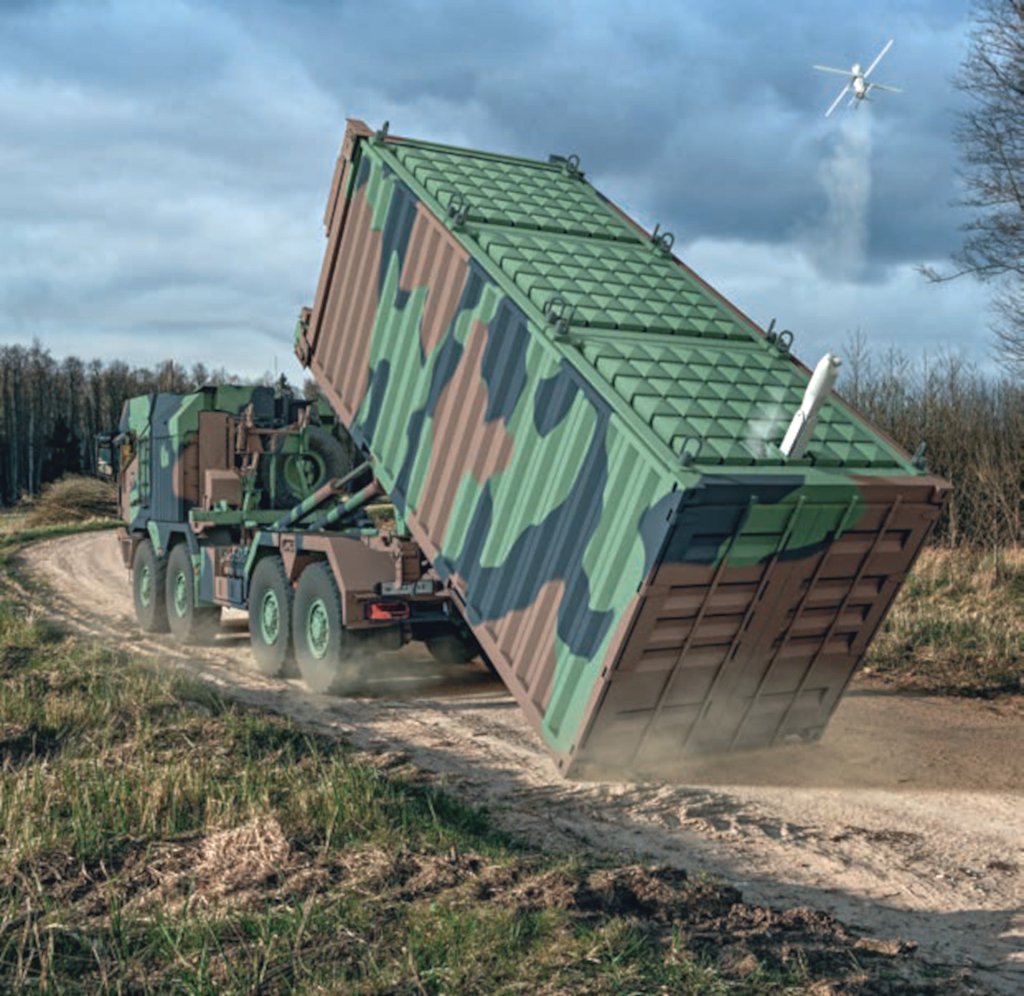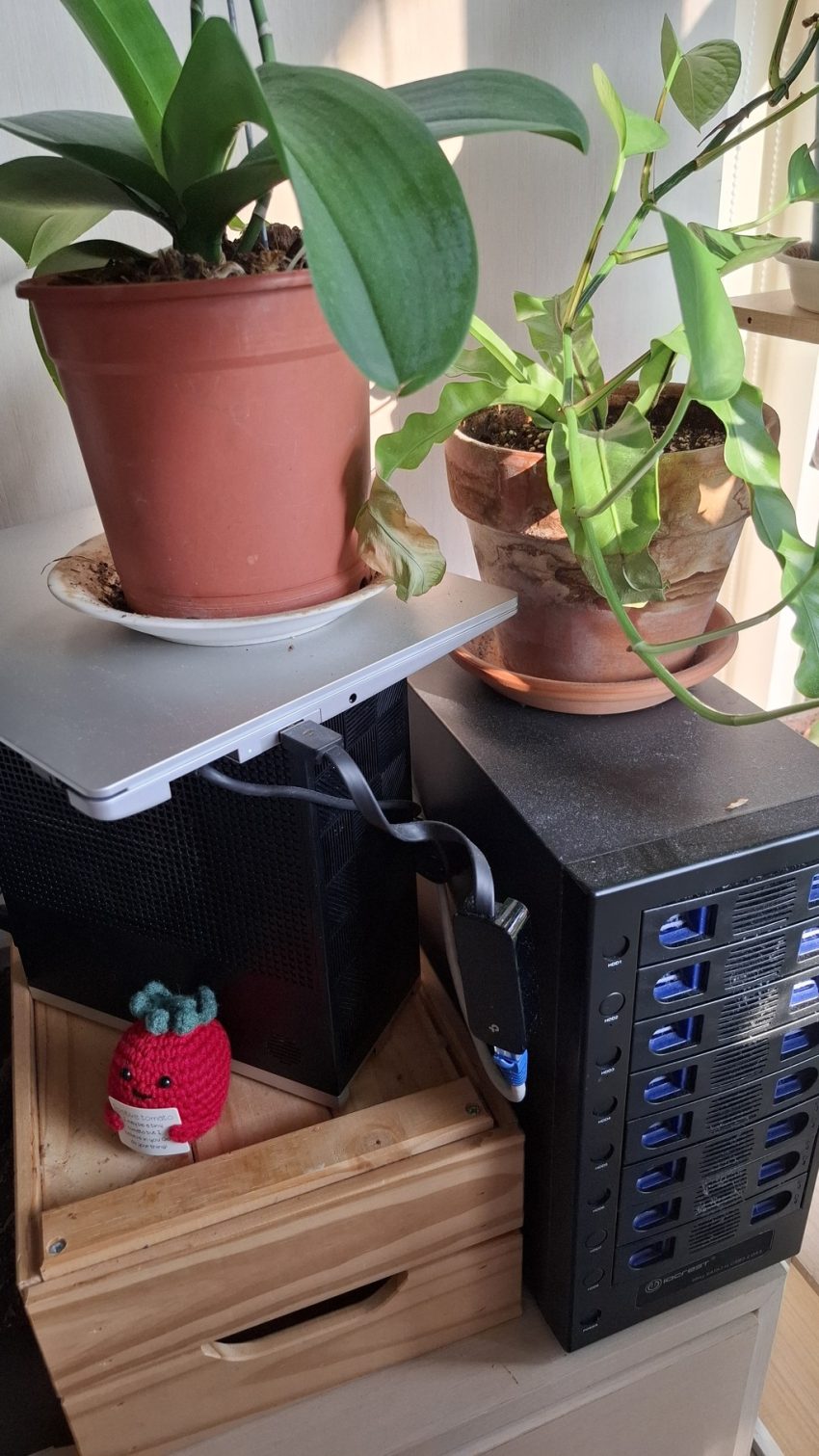The TWZ Newsletter
Weekly insights and analysis on the latest developments in military technology, strategy, and foreign policy.
A company in China recently unveiled a containerized system it says is capable of quickly launching and recovering thousands of small quadcopter-type drones at the touch of a button. Though designed to make it faster and easier to perform drone light shows for entertainment purposes, the system does underscore threats posed by more capable, weaponized swarms, which are very real now and will only continue to grow in scale and capability.
In addition, just earlier this year, Ukrainian forces carried out unprecedented covert attacks on multiple airbases in Russia using kamikaze quadcopters launched from inside container-like enclosures built to look like small sheds or tiny homes, and carried on the back of trucks. The amount of pinpoint destruction a single container can potentially contain is very concerning, especially for near-field attacks behind the lines. This is something we have been warning of for years.
Chinese firm DAMODA (also sometimes abbreviated DMD) rolled out what it calls the Automated Drone Swarm Container System at the end of September. The company has been in the large-scale drone light show business for nearly a decade, and currently holds the Guinness World Record for “most remote-controlled multirotors/drones airborne simultaneously” (11,198), among others.
The Automated Drone Swarm Container System that has been shown so far consists of at least 12 flat racks, each loaded with 54 quadcopters, for a total of 648 drones. At the press of a button, the racks extend straight out from the container in a step-down arrangement along telescoping rails, as seen in the videos above and below. As noted, DAMODA says the system can be used to deploy thousands of drones, which could point to a scalable design. Multiple systems could also be employed together to increase the total number of available quadcopters.

“With one click, the container unfolds and positions thousands of drones in perfect formation — no manual setup required,” according to information accompanying the footage above. “The system handles synchronized takeoff and precision landing, ensuring seamless, safe operations.”
“After the show, every drone returns and stores itself back in the container, ready for the next performance,” it adds. “Mounted on a truck, the container can be transported anywhere — turning any site into a drone swarm stage within minutes.”
One of the videos also shows a single operator deploying the containerized system via a handheld controller and then conducting the drone light show using a laptop computer.
“Fewer operators, faster setup, and minimal labor” and “rapid deployment and repeatable performances across multiple venues” are among the benefits that the Automated Drone Swarm Container System offers, according to DAMODA.
DAMODA has already been using manually-emplaced pre-loaded racks of drones to reduce set-up and break-down time for shows. Those racks also have built-in batteries to recharge the quadcopters. The containerized system is a clear extension of that concept.

It is worth reiterating that DAMODA’s Automated Drone Swarm Container System, at least as it exists now, is clearly designed for entertainment industry use first and foremost. Though the company’s drone light show routines are certainly visually impressive and often go viral on social media, they are pre-scripted and conducted in a very localized fashion. What the company is offering is not a drone swarm capable of performing various military-minded tasks in a highly autonomous manner at appreciable ranges from its launch point.


At the same time, large-scale drone light shows put on by DAMODA (and a growing number of other companies), do highlight, on a broad level, the already highly problematic threats posed by swarms. The new Automated Drone Swarm Container System underscores the additional danger of these same threats hiding in plain sight. The steady proliferation of advances in artificial intelligence and machine learning, especially when it comes to dynamic targeting, will only create additional challenges, as TWZ has explored in detail in this past feature.
This is not theoretical, either. As mentioned, in June, Ukrainian forces launched multiple drone attacks on airbases across Russia with the help of covert launchers loaded on the back of unassuming civilian tractor-trailer trucks. This entire effort was dubbed Operation Spiderweb and took months of planning.
The russian terrorist state no longer has the ability to produce Tu-95s or any kind of strategic bomber. This is a tremendous victory for Ukraine. pic.twitter.com/SVeQE78v0h
— Michael MacKay (@mhmck) June 1, 2025Authorities in Ukraine claimed to have destroyed or at least damaged 41 Russian aircraft. The U.S. Defense Intelligence Agency (DIA) has since assessed that Russia lost at least 10 of its prized strategic bombers. The exact breakdown of Russian aircraft losses by type as a result of the Spiderweb attacks remains unclear.
Teams of Israeli operatives also launched close-proximity drone and missile attacks on targets inside Iran during the opening phase of the 12-day war between those two countries earlier this year.
Chinese companies have been actively developing container-like launchers for the rapid deployment of drone swarms for military use for years now already, as well as growing autonomous capabilities to go with them. An increasing number of defense contractors globally, including ones in the United States, are now working on similar kinds of drone launch capabilities.



TWZ previously laid out a particularly detailed case for why the U.S. Navy should field swarms of drones packed in containers on its ships, which you can find here. Many of those arguments are equally applicable to the employment of drone swarms via land-based or even larger aerial platforms.
A containerized system could allow a single truck to quickly launch hundreds of drones, which could be configured for a variety of military mission sets, including surveillance and reconnaissance, electronic warfare, and kinetic attack. Even if the drones inside are relatively short-ranged, multiple trucks could fan out to cover a wider area, or otherwise conduct distributed operations focused on separate parts of the battlefield simultaneously.
Depending on their exact size and configuration, a small number of containerized launcher systems, or maybe even just one, could lay waste to every aircraft and vehicle in the open at an airfield, as well as radars and other targets, for instance.
If the swarm was networked together and infused with a high degree of autonomy, the drones could also execute such a mission much more efficiently. The drones with the ability to search and destroy targets autonomously could fly into open shelters and other structures to destroy assets inside. Still, even a more scripted attack against preset target coordinates across a larger facility, or even multiple enemy positions, could have devastating impacts. Especially against groups of exposed personnel, the swarm could act effectively as a massive cluster munition able to evenly saturate an area with effects.
Getting such a system packed with short-range drones close enough to the target area could be a major challenge, but not necessarily a disqualifying one. This is true for clandestine attacks behind enemy lines, as we have seen, but it’s also the case in more traditional combat scenarios, like those in urban settings where distinct lines of control are less clear or in very close proximity. Unleashing a massive swarm of autonomous drones packed with small amounts of explosives could be programmed to kill anything in a particular geographical area, for instance, or be more selective in their targeting. They can also quickly blanket an area to provide locations of combatants, civilians and objects of interest to commanders for follow-on actions.
Longer-range, harder-hitting drones, which could also have other capabilities, including electronic warfare systems and sensors for surveillance, could help move the launcher further away from the target area. Larger drones would also reduce the total number of them that could be loaded into a similarly sized launcher, and the size of the swarm, as a result. However, the boost in capability could be critical for particular missions.
 A rendering of a containerized launch system for the Hero family loitering munitions from German defense contractor Rheinmetall, as another example of a relevant concept that has been previously shown. Rheinmetall
A rendering of a containerized launch system for the Hero family loitering munitions from German defense contractor Rheinmetall, as another example of a relevant concept that has been previously shown. Rheinmetall Operation Spiderweb continues to prompt discussions around how best to defend against such an attack. It notably further fueled an already heated debate in and around the U.S. military about the value of hardened aircraft structure and other physical defenses at key facilities, as you can read more about here.
Even with limited autonomy and other capabilities, an attack involving hundreds of drones at once presents significant challenges for defenders, especially if the time they have to react is truncated. Electronic warfare systems and high-power microwave directed energy weapons continue to emerge as among the most effective available options against truly massive swarms, but can present their own complications. Electronic warfare may have no effect against autonomous drones and even powerful microwave systems have very short ranges and are directional in nature. TWZ has highlighted in the past how a swarm of interceptor drones may also be one of the best ways to challenge incoming waves of uncrewed aerial threats. Traditional anti-air gun systems and lasers that can only engage one threat at a time would have little impact on very large swarms. Missiles would also be very challenged to making a major dent in such an onslaught.
Altogether, while DAMODA’s new Automated Drone Swarm Container System may not be directly suitable for military applications, it may not be too long before a tactical analog emerges.
Contact the author: [email protected]
.png)



